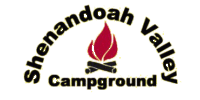Bicentennial Wagon Train Pilgrimage to Pennsylvania 1975 – 1976
Within 100 years of the signing of the Declaration of Independence at Philadelphia in 1776, the American colonies had spread from the eastern seaboard almost 3000 miles to the Pacific.
Spurred by curiosity, ambition, wanderlust, restlessness, cheap land, and a craving for profit and adventure, a stream of men, women, and children traveled westward in covered wagons and on river barges to the fertile Ohio and Mississippi River valleys. From their trains of covered wagons struck out across the great expanse for California and Oregon, priming a westward flow that became a virtual flood by the mid-1800s.
During this Bicentennial year, the Commonwealth of Pennsylvania is evoking the cry “Wagons, Ho!” and recalling this exciting chapter in America’s history with a Wagon Train Pilgrimage East, back over the storied routes of the pioneers.
Pennsylvania is sponsoring the Pilgrimage to focus attention on the Commonwealth’s key role in the birth of the nation, the American Revolution, and the early movement west.
The Bicentennial Wagon Train Pilgrimage to Pennsylvania is unique among the myriad observances this year because it engages Americans of all ages, in every state, in a celebration of American ideals and invites them to rededicate themselves to those principles.
The Pilgrimage is a train of authentic covered wagons, one from each state, crossing America on the historic trails and wagon routes that teemed with westbound travelers in the early 1800’s.
The Pilgrimage has provided each of the 50 states with a Conestoga Wagon or a Prairie Schooner and arranged for a teamster and horses for each wagon. The wagons were delivered early enough to give each state an opportunity to show its wagon at parades, fairs, and bicentennial events before it joined the pilgrimage.
JUNE DEPARTURE
The first wagons headed east from Blaine, Washington, in June 1975. By fall, wagons from nine northwestern states were on the Oregon, Bozeman, Mormon and Lewis and Clark trails, headed for winter layovers in Wyoming and South Dakota.
During the winter, wagons from the southern states began rolling and by spring, wagons from all 50 states were moving in five caravans toward a July 4 rendezvous at Valley Forge, PA, the hallowed encampment of Washington’s troops during the long winter of 1777 – 78.
The wagon caravans are magnetic.
Local wagon and carriage buffs, pleasure riders — even entire horse clubs — eagerly join the train as it crosses their county or state.
At most encampments, a troupe of performers traveling with the train puts on a sprightly, stirring musical created by the Department of Theater Arts of the Pennsylvania State University. And at each performance, local singers, dancers, glee clubs or bands join in to enrich the show and bring the pilgrims and townspeople together in a festive celebration.
Not everyone is a horseman or a singer, however.
Thousands of people in quiet hamlets and bustling suburbs visit the wagon train encampments just for a look at a graceful Conestoga wagon, a real Prairie Schooner, a quaint chuck wagon. They come to see the horses — proud Morgans, Arabians, thoroughbreds, Appaloosas, quarter horses — which have borne this growing party East. They come to talk with the teamsters and outriders to share stories of the train and of the history of their own locale.
And spectators line up at the encampments to sign the Rededication Scrolls and affirm their commitment to the principles of freedom that are the foundation of America’s growth and prosperity. These parchment scrolls are turned over to the wagonmaster at each night’s encampment for delivery to Valley Forge.
The above info was taken from the BICENTENNIAL WAGON TRAIN PILGRIMAGE to Pennsylvania 1975-1976 OFFICIAL SOUVENIR PROGRAM
